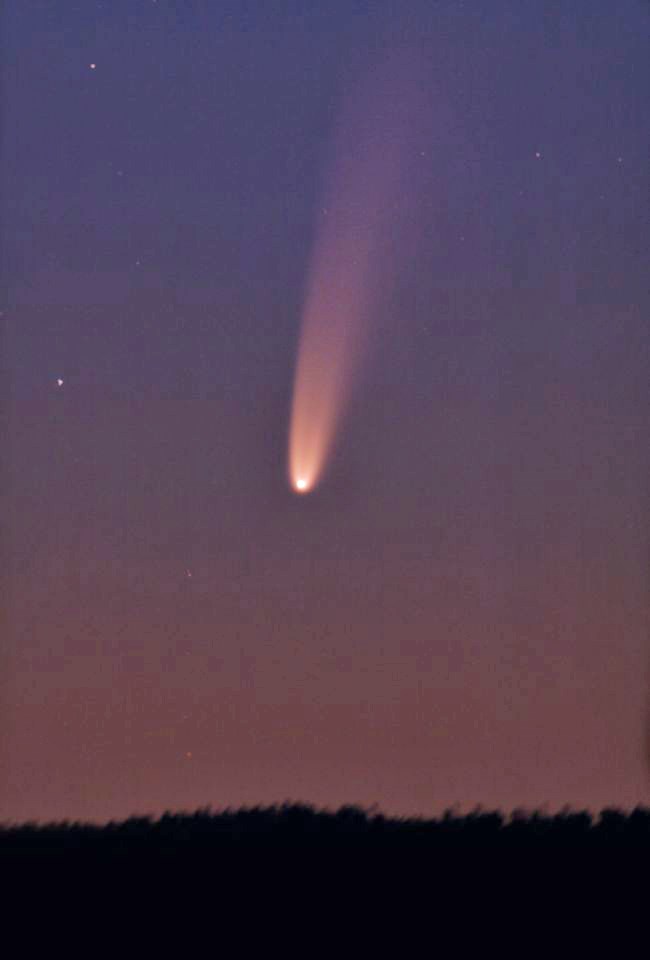Observers of the night sky could have something new to look out for in the coming weeks – a comet discovered by NASA’s Near-Earth Object Wide-field Infrared Survey Explorer (NEOWISE) telescope and catalogued as C/2020 F3.
When it was initially discovered on March 27, it was 312 million kilometres from Earth – visible only to powerful telescopes. But its trajectory is bringing it far closer and has allowed amateur astronomers to track its approach. By early July it was as visible as some of the brightest stars in the sky, according to website Space.com.
While comets visible with binoculars or telescopes are common, it’s rare to get glimpses of “great” comets, says the website – maybe four in a lifetime if lucky. The last one to pass through the northern hemisphere was Hale-Bopp in 1997.
The website says the NEOWISE comet, as it’s come to be known, could reach a similar brightness. It’s expected to be visible with the naked eye in the evening northwest sky beginning around July 12 and by July 22 should be about 100 million kilometres from the Earth – the closest it’s expected to get.
“This thing is going up and left every day in the sky,” said Richard Corbet of the Sunshine Coast Astronomy Club. For those eager to catch it, Corbet suggests heading somewhere with a clear view of the western sky. “If you’re in Davis Bay… you’d be able to go down to the pier and see this puppy.”
Bring binoculars for a better view and arrive between 15 and 30 minutes after sunset. “You should be able to see the tail, that’s mainly what you see,” he said.
To learn more about the comet, see www.space.com/comet-neowise-july-2020-night-sky-forecast.html



